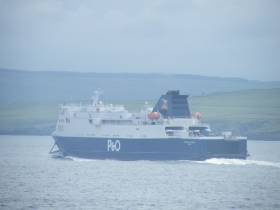Displaying items by tag: Highest freight figures
Freight Figures 'Highest' Boost for Port of Larne
#ferry - The highest number of lorries and trailers travelling on P&O Ferries between Larne and Cairnryan was reached in the third quarter of the year than it has in any Q3 since 2011.
As the News Letter writes the ferry company carried 53,305 lorries and trailers on its ships in the months of July, August and September - a 3.3 per cent increase on the same quarter last year.
Neal Mernock, P&O Ferries Sector director on the Irish Sea, said: “We are delighted that more and more freight customers are experiencing for themselves the benefits of transporting goods between Northern Ireland and Britain with us.
“Our port at Larne is fast becoming the gateway of choice for anyone exporting to or from Ireland. It has outstanding connections via rail and road, especially after the upgrading of the A8 dual carriageway, and is nine miles closer to Scotland than the port at Belfast.”
P&O Ferries operates seven sailings a day between Larne and Cairnryan using two 21,000 ton sister vessels, European Causeway and European Highlander. The regular daily service, the company notes, provides a bridge for goods being transported between Northern Ireland and the Republic of Ireland to Britain, and also on to the continent via its connecting services from Dover, Tilbury, Hull and Teesport.
For more on this story, click here.






























































